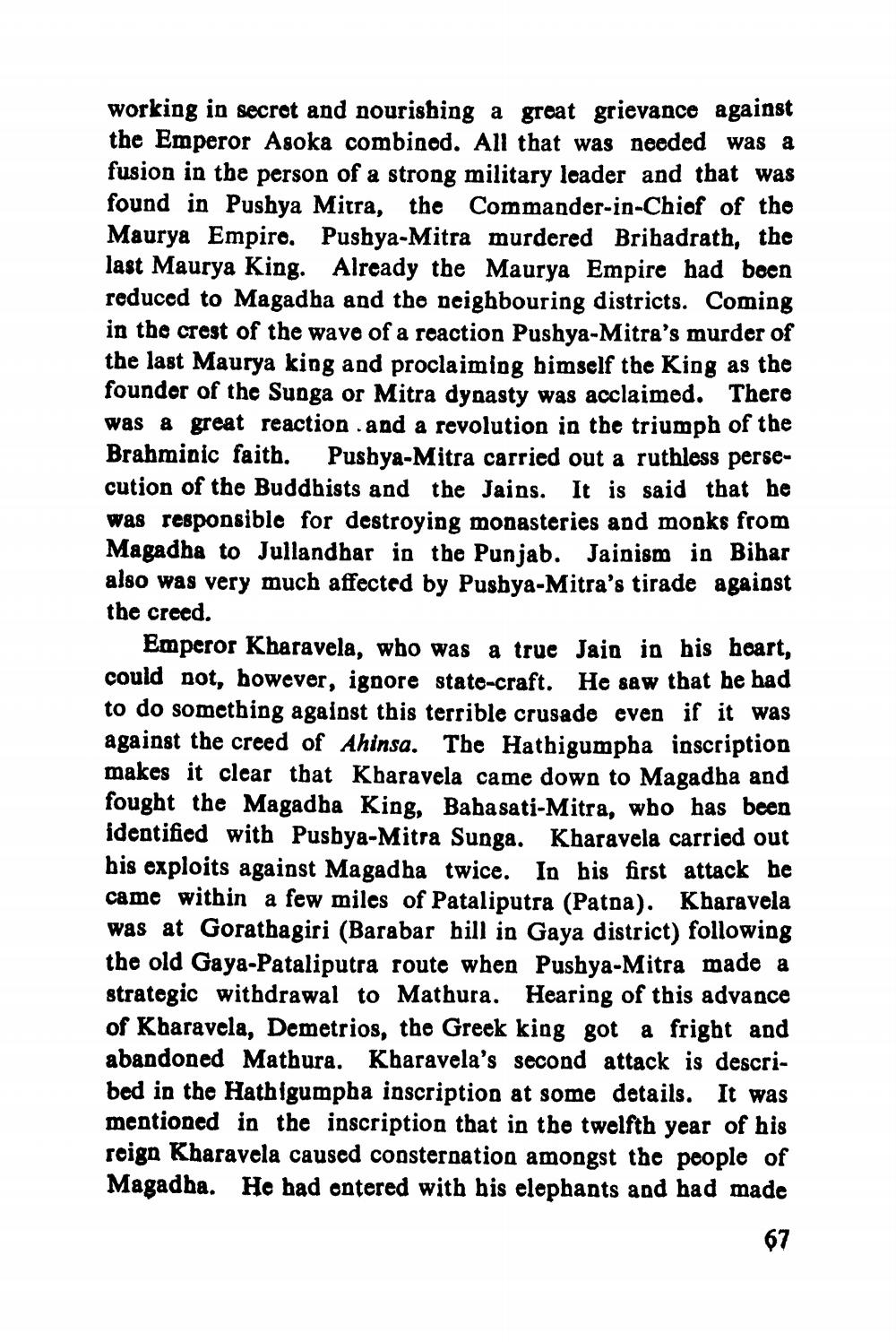________________
working in secret and nourishing a great grievance against the Emperor Asoka combined. All that was needed was a fusion in the person of a strong military leader and that was found in Pushya Mitra, the Commander-in-Chiof of the Maurya Empire. Pushya-Mitra murdered Bribadrath, the last Maurya King. Already the Maurya Empire had boen reduced to Magadba and the neighbouring districts. Coming in the crest of the wave of a reaction Pushya-Mitra's murder of the last Maurya king and proclaiming himself the King as the founder of the Sunga or Mitra dynasty was acclaimed. There was a great reaction .and a revolution in the triumph of the Brahminic faith. Pushya-Mitra carried out a ruthless persecution of the Buddhists and the Jains. It is said that he was responsible for destroying monasteries and mooks from Magadha to Jullandhar in the Punjab. Jainism in Bihar also was very much affected by Pushya-Mitra's tirade against the creed.
Emperor Kharavela, who was a true Jain in his heart, could not, however, ignore stato-craft. He saw that he had to do something against this terrible crusade even if it was against the creed of Ahinsa. The Hathigumpha inscription makes it clear that Kharavela came down to Magadha and fought the Magadha King, Babasati-Mitra, who has been identified with Pushya-Mitra Sunga. Kharavela carried out bis exploits against Magadha twice. In his first attack be came within a few miles of Pataliputra (Patna). Kharavela was at Gorathagiri (Barabar hill in Gaya district) following the old Gaya-Pataliputra route when Pushya-Mitra made a strategic withdrawal to Mathura. Hearing of this advance of Kharavela, Demetrios, the Greek king got a fright and abandoned Mathura. Kharavela's second attack is described in the Hathigumpha inscription at some details. It was mentioned in the inscription that in the twelfth year of his reign Kharavela caused consternation amongst the people of Magadha. He bad entered with his elephants and had made




